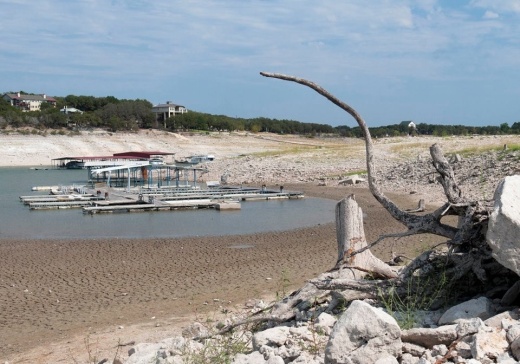Climatologists have confirmed the global climate pattern called ENSO—El Niño Southern Oscillation—has brought about the end of La Niña. This brings the Austin area into a neutral period between La Niña and El Niño, which could ease drought conditions, according to Michelle L'Heureux, ENSO expert at the Climate Prediction Center for the National Oceanic and Atmospheric Administration. According to the NOAA Climate Prediction Center's three-month outlooks, El Niño is likely to take over the Central Texas area around the end of the summer and early fall.
"The neutral period between La Niña and El Niño is important to us because when [La Niña and El Niño] form, they can exert an influence on the overlying tropical atmospheric circulation," L'Heureux said. "Because the tropical Pacific is so large, this distributes heat and momentum differently to the atmosphere and, as a result, can shift the position of the jet stream that influences North America."
L'Heureux said without La Niña or El Niño, this cascade of effects is nonexistent, therefore leaving the normal weather patterns to take over during the ENSO neutral period.
"What that means for us is that chances are we will have normal spring precipitation," said Timothy Loftus, general manager of the Barton Springs/Edwards Aquifer Conservation District. "Normal is a relative term in Texas, but in May and June—our two rainiest months in Austin—we are hopeful that we will get that average rainfall."
However, Randall Mena, public information specialist for Austin Water, said the anticipated rain amounts are "unlikely to lift us out of our current drought for many months."
"Regardless of rainfall, in an ideal world, conservation would be a way of life," Lotus said. "We do not want to only practice conservation when we are in a drought—it should be practiced 365/24/7."
Mena said Austinites should take steps to prepare their homes, both indoors and outdoors, to be water-wise. To help, Austin Water has compiled a checklist with tips and tricks for saving water year-round.
Austin Water has reached a halfway point for installing smart meters, which replace the analog meters currently used by residents, Mena said. The expected completion date is 2025. Additionally, Austin Water is working on its Water Forward Plan—Austin's 100-year integration water resource plan. Mena said Austin Water is also working to complete its first five-year update to the Water Forward Plan and is targeting plan completion by 2024.
"We encourage community members to visit the Water Forward 2024 Speakup Austin! page by clicking here for project updates and to provide input," Mena said.





